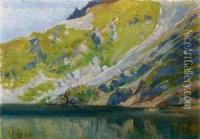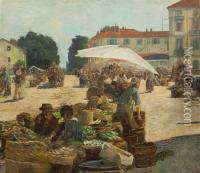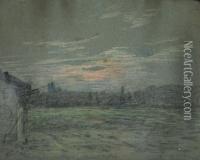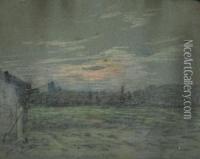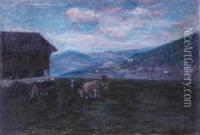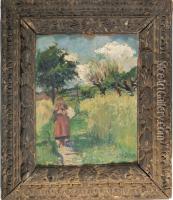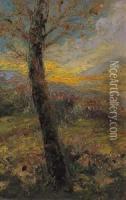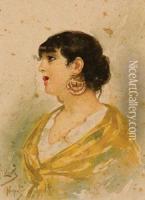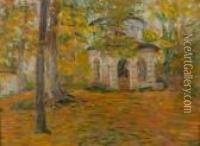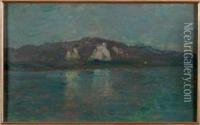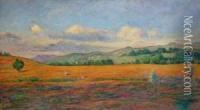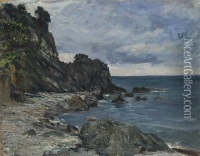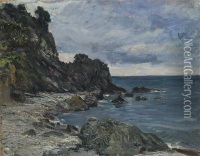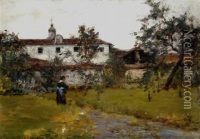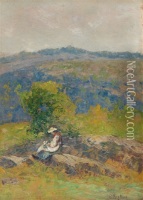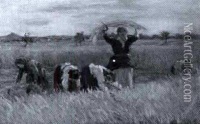Clemente Pugliese Levi Paintings
Clemente Pugliese Levi was an Italian painter and printmaker, known for his contributions to the Italian art scene during the first half of the 20th century. Born in 1898 in Milan, Pugliese Levi was part of a generation of artists who were active during a period of significant political and social change in Italy, which included the rise and fall of Fascism and the impact of both World Wars.
Pugliese Levi's artistic journey began with his education at the Brera Academy in Milan, where he trained under the guidance of Cesare Tallone, an established painter of the time. Throughout his career, Pugliese Levi explored various styles and techniques, which included elements of Symbolism, Expressionism, and later on, abstraction. His early work often depicted landscapes and figures with a subtle, poetic sensibility, reflecting the influence of his mentors and the prevailing styles of the early 20th century.
During the 1920s and 1930s, Pugliese Levi became known for his etchings and lithographs, mediums through which he achieved a level of recognition both in Italy and abroad. His graphic work often carried a strong narrative element, with attention to detail and a dynamic use of line. He participated in numerous exhibitions, such as the Venice Biennale and the Rome Quadriennale, and his work was collected by both private collectors and public institutions.
As Italy entered the Second World War, Pugliese Levi, like many of his contemporaries, faced the challenges of creating art in a time of conflict and oppression. Despite these difficulties, he continued to work and evolve his style. After the war, his work reflected a shift towards more abstract forms, although he never completely abandoned the representation of the natural world.
Pugliese Levi remained active in the Italian art scene throughout his life, contributing to the development of modern art in Italy. He passed away in 1984, leaving behind a legacy as a versatile and dedicated artist whose work captured the complexities of his time. His art continues to be studied and appreciated for its historical significance and its unique blend of tradition and innovation.
